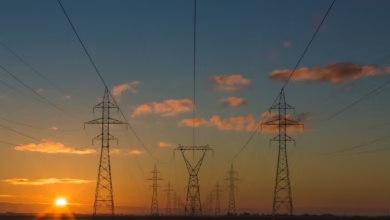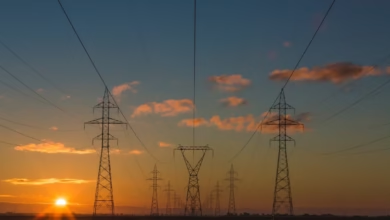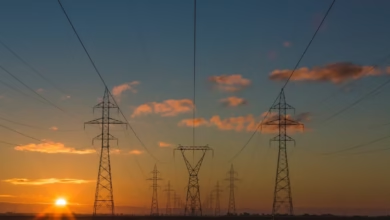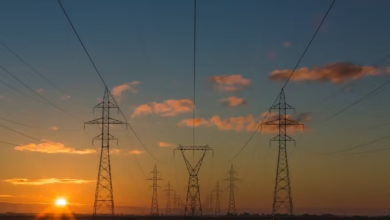Empowering Tomorrow: The Surge of Renewable Energy Through Solar, Wind, and Hydrogen Innovations
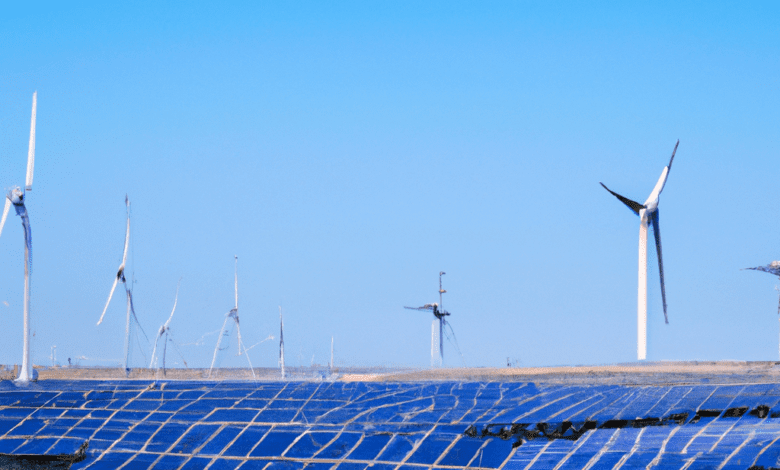
As the world grapples with the pressing challenges of climate change, energy security, and the depletion of fossil fuels, a transformative shift toward renewable energy is not just desirable—it has become essential. The rise of renewable energy sources such as solar, wind, and hydrogen power is reshaping our energy landscape, offering innovative solutions that promise to reduce carbon emissions, enhance energy independence, and pave the way for a sustainable future. In this article, we delve into the remarkable advancements in these three pivotal areas of renewable energy. We begin by exploring the solar revolution and its profound implications for energy independence, followed by an examination of how wind power is reshaping the global energy paradigm. Finally, we will investigate the burgeoning role of hydrogen power as a key player in the transition to a sustainable energy economy. Together, these renewable resources not only hold the potential to mitigate environmental challenges but also to empower nations, communities, and individuals in their pursuit of a cleaner, greener world. Join us as we navigate the promising landscape of renewable energy and its vital role in shaping a sustainable future for generations to come.
- 1. **Harnessing the Sun: The Solar Revolution and Its Impact on Energy Independence**
- 2. **Winds of Change: How Wind Power is Transforming the Global Energy Landscape**
- 3. **Fueling the Future: The Role of Hydrogen Power in a Sustainable Energy Economy**
1. **Harnessing the Sun: The Solar Revolution and Its Impact on Energy Independence**
The solar revolution has transformed the energy landscape, offering a sustainable and abundant source of power that significantly contributes to energy independence. As technological advancements have driven down the costs of solar panels and improved their efficiency, solar energy has emerged as a leading player in the renewable energy sector. Countries around the globe are increasingly investing in solar infrastructure, recognizing its potential to reduce reliance on fossil fuels and enhance energy security.
Harnessing the sun's energy begins with photovoltaic (PV) technology, which converts sunlight directly into electricity. This process not only empowers households and businesses to generate their own power, but it also allows for the decentralization of energy production. By installing solar panels on rooftops, communities can tap into local resources, reducing the need to import energy from external sources. This decentralization fosters resilience, particularly in regions vulnerable to energy supply disruptions.
The impact of solar energy goes beyond mere independence from fossil fuels. It catalyzes economic growth by creating jobs in manufacturing, installation, and maintenance of solar technologies. As governments prioritize renewable energy initiatives, the solar sector has become a significant driver of employment, providing opportunities in both urban and rural areas. Furthermore, the growth of solar energy can stimulate technological innovation, leading to advancements in energy storage solutions, such as batteries that can store excess solar power for use during non-sunny periods.
Moreover, the environmental benefits of solar energy are profound. By reducing greenhouse gas emissions and minimizing air pollution, solar power plays a crucial role in combating climate change. As more individuals and businesses make the switch to solar, the cumulative effect can lead to a substantial decrease in a nation's carbon footprint, aligning with global climate goals.
In summary, the solar revolution is not just about harnessing sunlight; it represents a critical shift toward energy independence. By empowering nations to rely on their own renewable resources, fostering economic growth, and promoting environmental sustainability, solar energy is paving the way for a cleaner, more resilient energy future. As this movement continues to gain momentum, the potential for solar power to reshape global energy dynamics becomes increasingly evident.
2. **Winds of Change: How Wind Power is Transforming the Global Energy Landscape**
In recent years, wind power has emerged as a formidable player in the global energy landscape, significantly reshaping how we think about energy generation and consumption. As countries grapple with the urgent need to reduce greenhouse gas emissions and mitigate climate change, wind energy offers a clean, sustainable alternative to fossil fuels. The rapid technological advancements in turbine design, along with decreasing costs, have made wind power more accessible than ever before.
Large-scale wind farms, both onshore and offshore, are proliferating across continents, harnessing the natural power of the wind to generate electricity. Offshore wind farms, in particular, have gained traction due to their ability to capture stronger and more consistent winds over the ocean. Countries like Denmark, Germany, and the United Kingdom are leading the charge, with ambitious targets to expand their offshore wind capabilities. In fact, the UK has made headlines with projects that boast some of the largest and most efficient wind turbines in operation today.
The benefits of wind power extend beyond its environmental advantages. As investments in wind energy continue to rise, the sector is becoming a significant driver of job creation and economic growth. From manufacturing and installation to maintenance and operation, the wind energy industry is providing employment opportunities and fostering local economies. Furthermore, the decentralized nature of wind power generation allows communities to gain energy independence, reducing reliance on imported fossil fuels and enhancing energy security.
However, the transition to wind energy is not without challenges. Concerns regarding the impact of wind farms on wildlife, particularly birds and bats, have sparked debates over site selection and operational practices. Additionally, the intermittent nature of wind requires complementary systems, such as battery storage or diversified energy sources, to ensure a stable power supply. Nevertheless, ongoing research and innovation are addressing these issues, paving the way for a more resilient and integrated energy system.
As governments and companies worldwide commit to ambitious climate goals, wind power stands at the forefront of the renewable energy revolution. It is not just a fleeting trend but a fundamental shift in how we generate and consume energy. With the winds of change blowing stronger than ever, wind power is set to play a pivotal role in shaping a sustainable future for generations to come.
3. **Fueling the Future: The Role of Hydrogen Power in a Sustainable Energy Economy**
As the world grapples with the pressing challenges of climate change and the need for cleaner energy sources, hydrogen power emerges as a pivotal player in the transition to a sustainable energy economy. Hydrogen, the most abundant element in the universe, offers a versatile energy carrier that can be produced from various sources, including renewable energy, natural gas, and even biomass. Its ability to provide clean energy, particularly when produced via electrolysis using renewable sources, positions hydrogen as a key component in decarbonizing sectors that have proven difficult to electrify, such as heavy industry and transportation.
One of the most promising aspects of hydrogen power is its potential for energy storage and transport. Unlike batteries, which are limited by capacity and charging speeds, hydrogen can be stored for long periods and transported over vast distances, making it an ideal solution for balancing intermittent renewable energy sources like solar and wind. When excess renewable energy is available, it can be used to generate hydrogen, which can then be stored and utilized later when demand peaks, effectively acting as a buffer in the energy system.
Moreover, hydrogen can be deployed in various applications. In the transportation sector, hydrogen fuel cells offer a zero-emission alternative to traditional fossil fuels, particularly for heavy-duty vehicles, ships, and trains. In industrial processes, hydrogen can replace fossil fuels in steel and cement production, significantly reducing greenhouse gas emissions. Additionally, hydrogen’s role in the production of ammonia for fertilizers further underscores its importance in creating a sustainable agricultural future.
As governments and industries worldwide invest in hydrogen infrastructure and technology, the challenges of production, distribution, and storage are being actively addressed. Innovations in electrolysis and advancements in fuel cell technologies are driving down costs, while policies and incentives are fostering a supportive environment for hydrogen development. The establishment of hydrogen hubs and networks will facilitate the integration of this clean energy carrier into existing energy systems.
In conclusion, hydrogen power holds immense potential in fueling a sustainable energy economy. By harnessing its versatility and leveraging advancements in technology, hydrogen can play a crucial role in achieving global climate goals, reducing reliance on fossil fuels, and paving the way for a cleaner, greener future. As the world transitions towards more sustainable energy solutions, the role of hydrogen will undoubtedly grow, marking a significant step forward in the quest for an environmentally friendly energy landscape.
In conclusion, the rise of renewable energy sources—particularly solar, wind, and hydrogen power—marks a pivotal shift toward a more sustainable and resilient energy future. As we harness the sun's abundant rays, capture the winds that sweep across our landscapes, and innovate with hydrogen as a versatile fuel, we are not only reducing our dependence on fossil fuels but also transforming the global energy landscape. The advancements in technology and infrastructure for these renewable sources have the potential to empower communities, create jobs, and foster energy independence on a scale previously thought unattainable.
Moreover, as governments, businesses, and individuals increasingly recognize the urgent need to combat climate change, the integration of renewable energy into our daily lives becomes not just a choice, but a necessity. The combined efforts in these sectors represent a beacon of hope for a sustainable future—one that prioritizes environmental stewardship while meeting the growing energy demands of our world. As we continue to innovate and invest in these clean energy solutions, we can look forward to a future where energy is not only abundant and affordable but also aligned with the health of our planet. The transition to renewable energy is not just a trend; it is the foundation upon which we will build a more sustainable, equitable, and prosperous world for generations to come.


